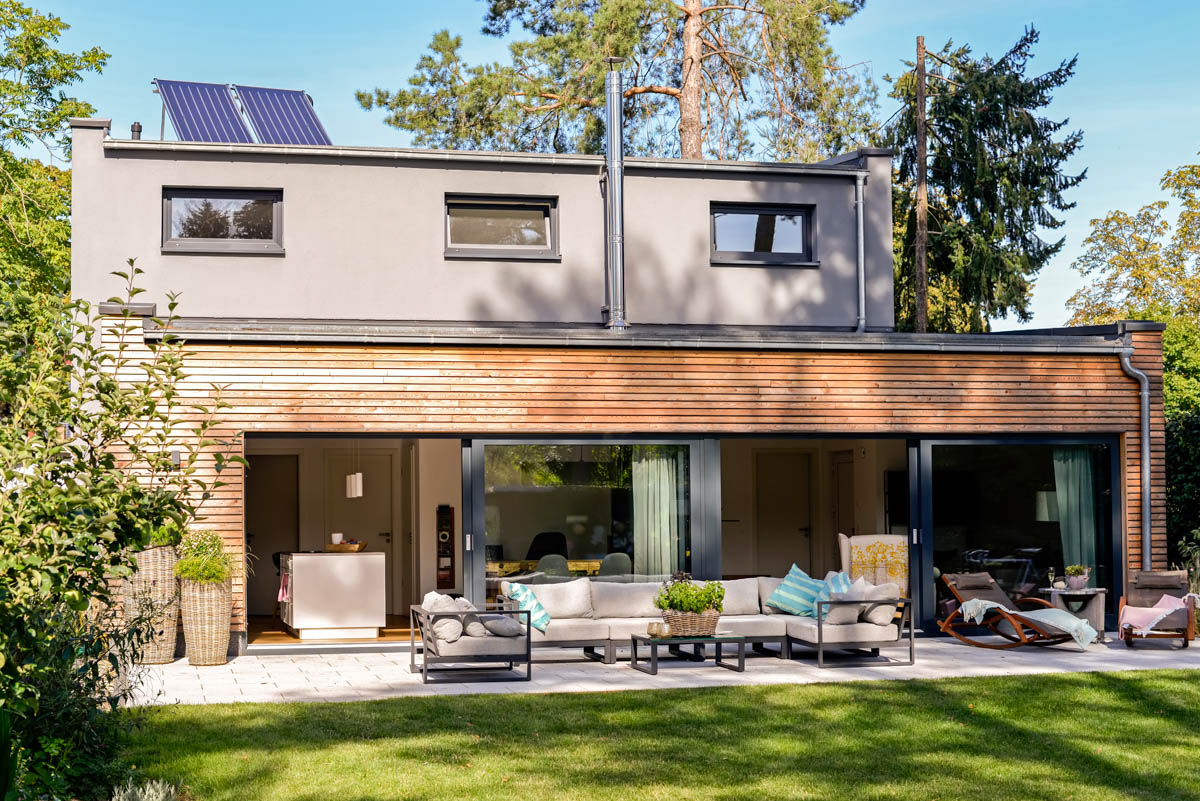8 Ways to Make Your Home More Sustainable
The following tips not only may have cost-saving benefits, but some eco-friendly features may help you sell your home faster.


Written by Susan Kelleher on April 18, 2024
The market for sustainable home products has exploded in recent years, offering homeowners the opportunity to practice energy and water conservation right at home.
Sustainable features such as smart thermostats, drip detectors and lighting can cut down on your energy bills while keeping your home at a comfortable temperature. While some of the features involve technology, others involve choices around landscaping, furnishing and reusing food waste. All involve intentional choices to live a more sustainable lifestyle.
Here are eight ways you can make your home more sustainable:
1. Water-saving devices
Devices and technology that allow for saving water are commonplace and include such things as low-flow or dual-flush toilets, low-flow shower heads, in-sink aerators and drip irrigation systems.
You also can save water by replacing old water heaters and dishwashers with EnergyStar appliances. Products with the EnergyStar label meet strict energy specifications established by the U.S. Environmental Protection Agency (EPA)*. You can find a list of those products here. What's more, Zillow® research finds that homes mentioning EnergyStar in their listing sold 2.6 days faster than those without.
2. Smart sprinkler systems
Instead of having your sprinkler system run at the same time every day, smart sprinkler systems allow you to turn your sprinklers off and on remotely, through an app on a computer or smart phone, to adapt to the weather. Some systems operate automatically, collecting information through moisture sensors and activating when the moisture or temperature reaches a range determined by the user.
Products labeled with the WaterSense logo meet EPA criteria for water savings.
3. Drought-resistant landscaping
Imagine having a yard that requires little if any watering or fertilizing. That’s what you’ll get when you design a landscape that consists of drought-tolerant or low water use plants selected specifically for your area.
The drought-tolerant label means that, once in the ground, the plants require little or no additional water or fertilizer to survive.
You can look for plants that will thrive in your state, or even an area within your state, on the EPA’s list of native plants. The agency also has tips on how to create water-efficient landscaping.
4. Double pane windows and insulation
Replacing single-pane windows is a low-tech solution that can make a big difference in controlling the temperature and the energy used to heat or cool your home. Likewise for insulation, which may be insufficient in older homes.
For tips on fixing drafty windows, check out this article. Tips on adding insulation to an existing home can be found here.
5. Solar energy systems
Homes with solar energy systems can save energy, lower electric bills and often sell for more than comparable homes.
To help determine your home’s potential for solar, all homes on Zillow include a rating on a scale of 1-100 that reflects a home’s potential for solar.
The higher the score, the more suitable for solar that house is.
6. Smart tech to control temperatures inside your home
The number of products available to control temperature seems to grow every year. Some of the top ones to consider:
- Ceiling fans, including those with motion sensors and those that connect with apps.
- Smart shades, operated remotely or on a schedule, which open and close to allow energy to pass through to help cool or warm a room.
7. LED lightbulbs
According to the U.S. Department of Energy, lighting accounts for about 15% of an average home’s electricity use. LEDs use up to 90% less energy than traditional incandescent bulbs — and last up to 25 times longer. Switching to LED lights saves the average household about $225 a year in energy costs.
8. Repurposed furniture and salvaged building materials
Older furnishings can be updated with throws and pillows, refinished or painted to create a fresh vibe. You can also save stuff from going into the landfill — and possibly save money — by buying used materials such as doors, cabinets, flooring and windows that have been salvaged from other construction or demolition projects.
Check your local business listings to see if there are salvage businesses nearby.
*Mention of or referral to commercial products or services, and/or links to non-EPA sites does not imply official EPA endorsement of or responsibility for the opinions, ideas, data, or products presented at those locations, or guarantee the validity of the information provided. Mention of commercial products/services on non-EPA websites is provided solely as a pointer to information on topics related to environmental protection that may be useful to EPA staff and the public.



